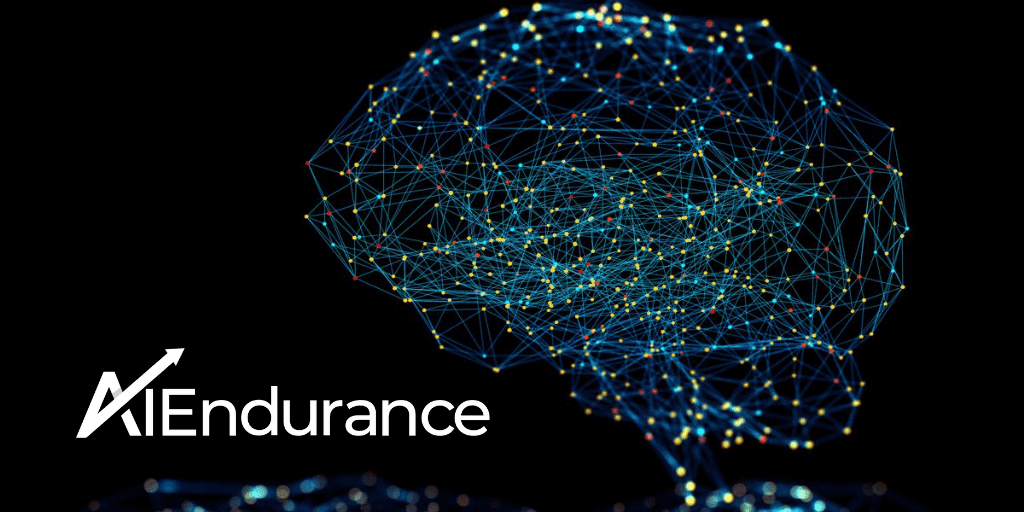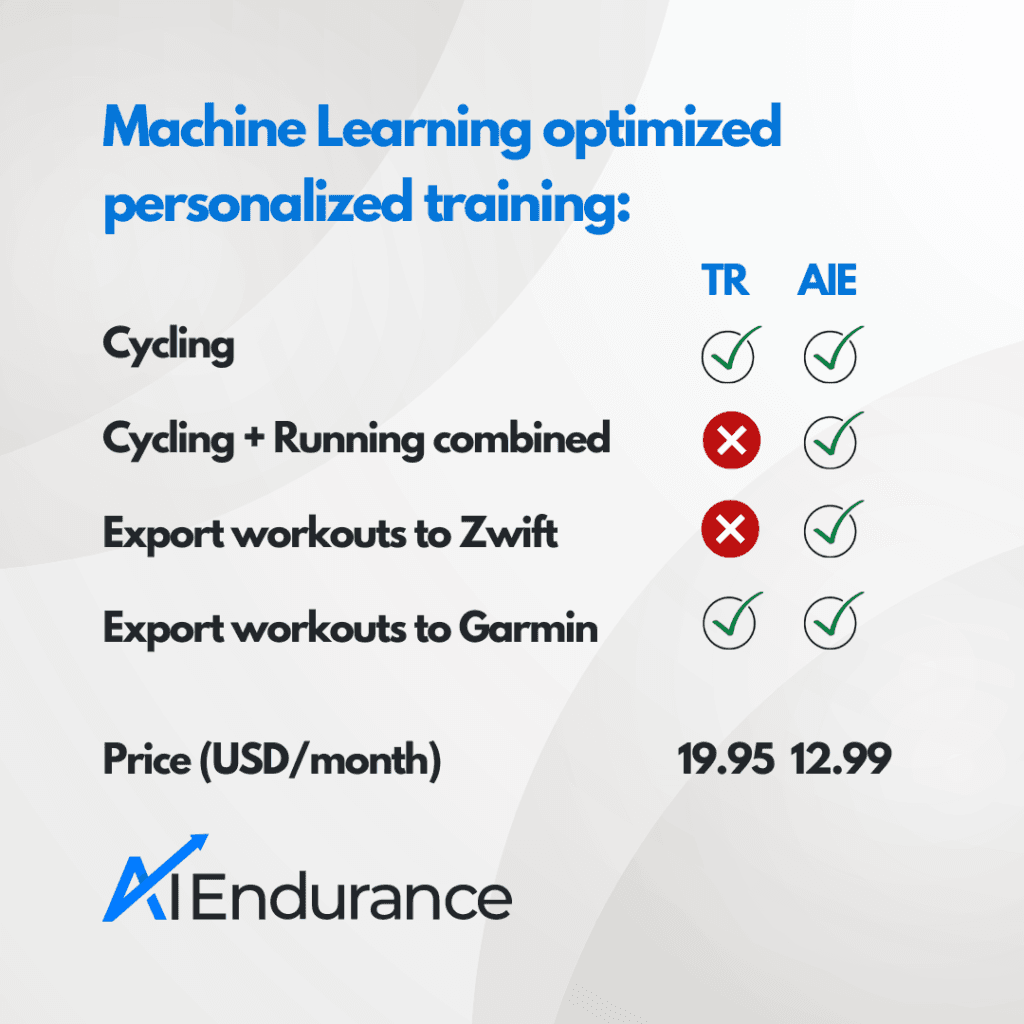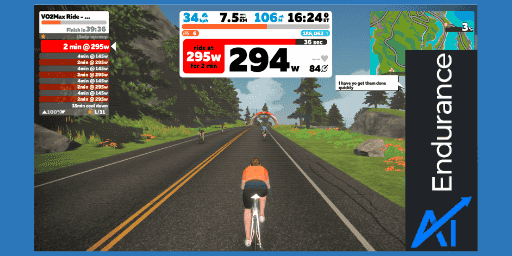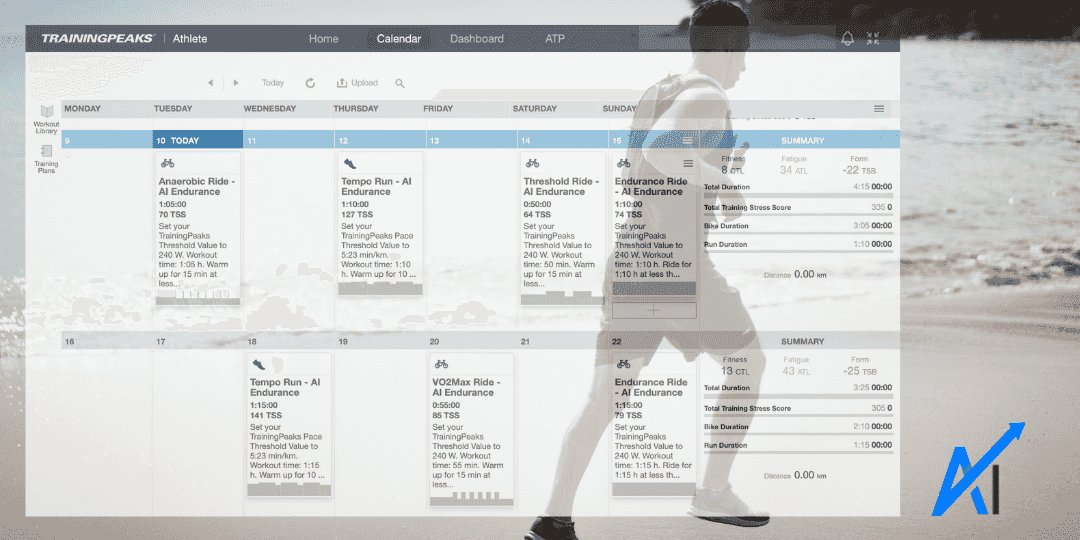
There are different options on the market for optimized AI training plans that are based on applying machine learning to your individual data. In this post, we compare the different options and their features.
We are big fans of TrainerRoad (TR) and their training plans which we have personally used extensively in the past. TR has announced adaptive training which "uses machine learning and science-based coaching principles to intelligently adjust your training plan, so you get the right workout, every time".
At this point TR is recommending one-off workouts 'TrainNow'. This feature looks similar to Garmin's daily recommended workout. TR is looking to incorporate more machine learning into their app in the future. For more info, see DC Rainmaker's post.

AI Endurance uses cutting edge machine learning technology (we even developed some our own methods) to create personalized AI training plans. The plans are based on your historical data and are predicted to give you the biggest performance gains for the time you have available for training. The AI is guided by best practices established around endurance training. It adapts your training as you progress through a training plan.
You can get cycling plans, running plans and also triathlon plans that take both your running and cycling data into account simultaneously. We predict your performance on your event date for the most common event types from 5k to Ironman.
You can also easily get your AI Endurance workouts into Zwift for both cycling and running. So if you're using Zwift already you can simply execute your personalized workouts there. You can also do your workouts directly from your Garmin device.
We believe that this is just the beginning of using machine learning to help endurance athletes improve. It is a classic problem where no human being can possibly wrap their head around all the possible ways we could structure endurance training and what the possible outcomes would be. AI however - can.

The world around us is changing, driven by technological advances that seek to improve our lives.

Use Zwift custom workouts to grow your FTP with a data-driven, personalized Zwift custom training plan from AI Endurance.

Stay on top of your goals and support our local businesses and charities at the same time. A virtual cycling challenge that comes as close to a race as possible now that social distancing is crucial in slowing down the spread of COVID-19.

Get your AI Endurance best training plan into TrainingPeaks. From there, you can execute your TrainingPeaks workouts in Zwift and many other apps. Connect your AI Endurance account once and any changes will automatically be synced with TrainingPeaks.